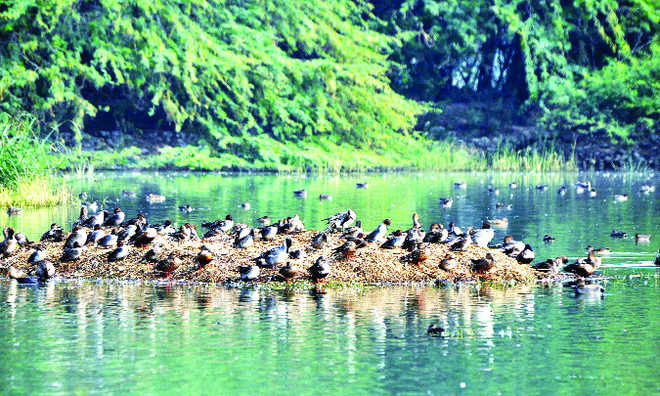Geetanjali Gayatri
Tribune News Service
Chandigarh, June 29
Land “frozen” in the name of eco-sensitive zones in Haryana for nearly a decade will shortly be open to infrastructure development activity. On the recommendation of the Haryana government, the Ministry of Environment, Forest and Climate Change is ready with draft notifications for these zones where 10-km area around protected areas was lying “blocked”.
“While one zone around Sultanpur Wildlife Sanctuary has already been notified, draft notification for four more such zones is ready while three other eco-sensitive zones are at various stages of the notification process. In all, Haryana will have 10 eco-sensitive zones,” Ashok Lavasa, Secretary, Environment, Forest and Climate Change, Government of India, said.
In 2002, the National Wildlife Management Plan had recommended that a buffer eco-sensitive zone of up to 10-km be created around all protected areas. In 2005, some states represented to the government against eco-sensitive zones stretching up to 10 km and wanted the states to be consulted. Caught in a tug-of-war between the Centre and the states, the matter went to the Supreme Court which ruled that 10 km would be the default distance of land be earmarked as eco-sensitive zone around the protected areas till the state government made their recommendations and these were notified.
The concept of eco-sensitive zone allowed the creation of a zone around the protected area where only regulated activity could be undertaken. Any activity adversely impacting the protected area could not be undertaken here, thereby making this area out-of-bounds for infrastructure development.
Interestingly, despite the 10-km stretch being blocked, most states sat on the matter, failing to send in their recommendations. Sources maintain that this disinterest in “unlocking” the “blocked” land essentially emanated from the state forest departments’ desire to keep control on the increased jurisdiction.
While all states dragged their feet on sending their recommendations, Haryana as also Punjab were among the states to take the lead.
While the draft notification is ready or in the process for Haryana’s eco-sensitive zones, two of Punjab’s recommendations have been sent back for not conforming to the prescribed format.
While Chhattisgarh, Jammu and Kashmir, West Bengal and Madhya Pradesh are yet to send in their recommendations, the ministry, over the last year, has approved the notification of 200 eco-sensitive zones throughout the country with 600 protected areas.
After the draft notification, various stakeholders, including the government, can revisit its recommendations within the stipulated period of two months before the zones are finally notified. Sources in the state government maintain that since the recommendations were made during the Congress rule, the present BJP government may want to reconsider the area earmarked as eco-sensitive zone around the two national parks in the state and the eight sanctuaries. However, that will emerge once the draft notification is out, sources maintain.
Eco-sensitive zones
Sultanpur Wildlife Sanctuary (pic)
Khol ki Raitan
Bhindawas
Bir Shikargarh
Nahar
Kalesar National Park
Kaparwas
Chhilchhila
Unlock Exclusive Insights with The Tribune Premium
Take your experience further with Premium access.
Thought-provoking Opinions, Expert Analysis, In-depth Insights and other Member Only Benefits
Already a Member? Sign In Now










